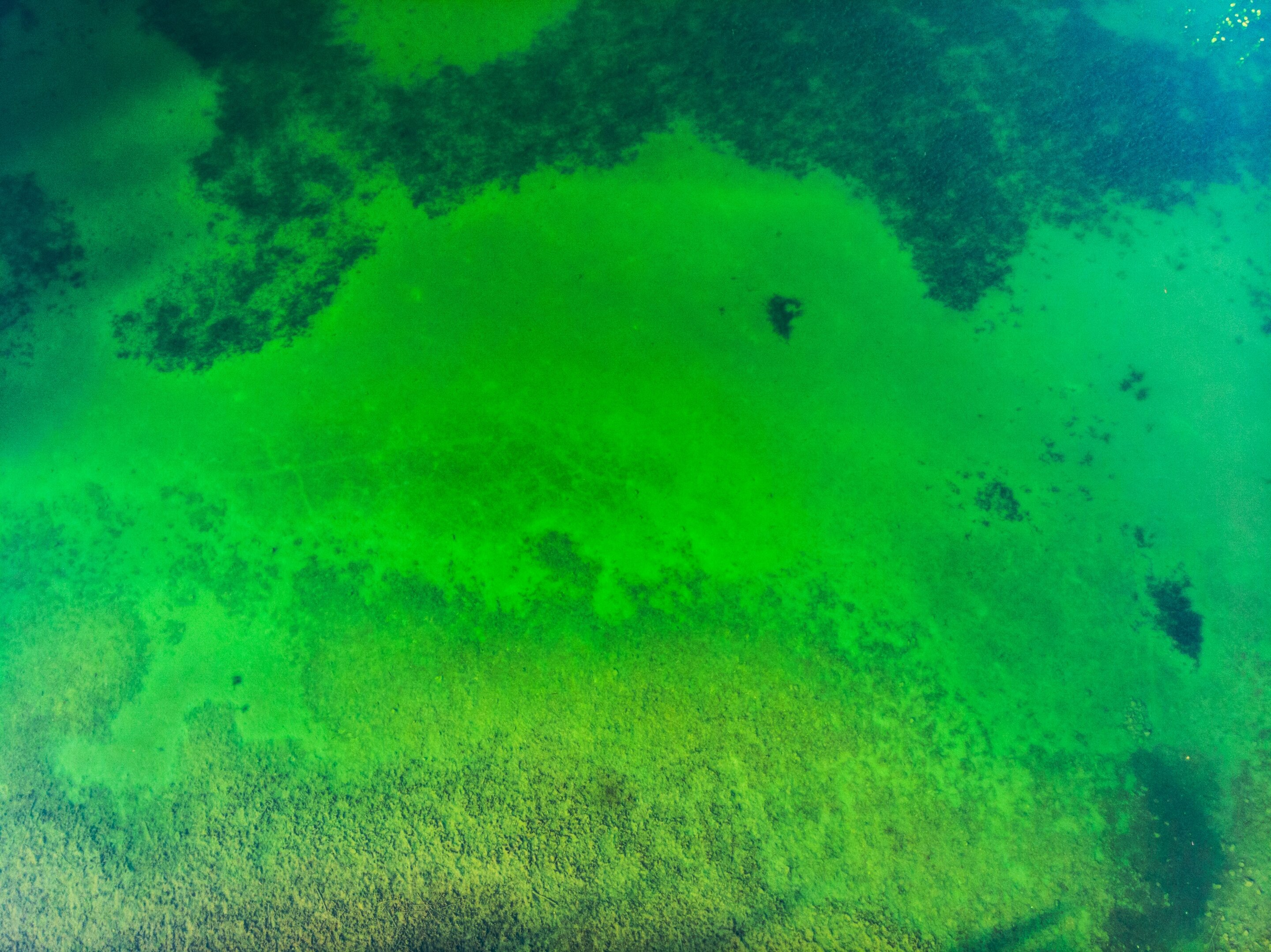Cyanobacteria in lakes are harmful to livestock, wildlife, pets, people and aquatic organisms like fish. Lakes, whether natural or man-made, serve as crucial sources of water, food, and habitat for wildlife while supporting local economies. However, these essential water bodies are increasingly threatened by toxic bacteria that turn the water green.
The Rise of Cyanobacteria in Lake Victoria
The green color in Lake Victoria is caused by cyanobacteria, microscopic organisms that thrive in warm, nutrient-rich waters. Cyanobacteria grow rapidly in lakes and ponds containing excess nitrogen and phosphorus, typically introduced by agricultural fertilizers, manure, and sewage.
When conditions become favorable, these bacteria multiply at alarming rates, forming smelly green scums on the water’s surface. These blooms, scientifically known as cyanobacterial harmful algal blooms (cyanoHABs), are highly toxic and pose a significant threat to both the environment and human health.
Cyanobacteria release toxins that make untreated water unsafe for drinking, swimming, or even coming into contact with human skin. In some cases, these toxins become airborne, creating additional risks for inhalation. Moreover, the cyanoHABs deplete oxygen levels in water bodies, suffocating aquatic organisms like fish and disrupting entire ecosystems.
Read : Charlcombe Lane Will Be Closed for Six Weeks to Help Toads Cross the Road to Their Breeding Lake
While the threat of cyanobacteria has been extensively studied in North America and Europe, its impact on Africa’s major lakes, including Lake Victoria, has received comparatively less scientific attention.
Read : Discovering Nature’s Giants: A Guide to the Largest Lakes Around the Globe
Existing research has primarily relied on microscopy, which cannot differentiate between toxic and non-toxic cyanobacteria. However, a team of scientists has recently undertaken a study to assess the socioeconomic and environmental effects of cyanoHABs in the Winam Gulf region of Lake Victoria, offering new insights into this growing crisis.
The Environmental and Human Impact of Cyanobacteria
Lake Victoria has been experiencing increased nutrient pollution due to a growing lakeside population and changes in land use. Agricultural runoff, industrial waste, and urban development contribute vast amounts of nutrients, particularly phosphorus and nitrogen, which fuel the growth of cyanoHABs.
These blooms occur across multiple regions in Lake Victoria but are particularly concentrated in the Winam Gulf, a shallow region in Kenya.
The presence of cyanobacteria in Lake Victoria poses serious health risks to lakeside communities. Many people rely on the lake for drinking water and domestic purposes, making them vulnerable to toxic exposure.

The toxins released by cyanobacteria, such as microcystins, are known to damage the liver and can be fatal to humans, livestock, and wildlife. Unfortunately, previous research using traditional microscopy techniques has been unable to distinguish between toxic and non-toxic strains of cyanobacteria, making it difficult to monitor and address the issue effectively.
A recent study used advanced genomic sequencing technology to identify the genetic markers responsible for toxin production in cyanobacteria. Researchers conducted sampling at 31 different sites around Lake Victoria, analyzing DNA to determine which strains of cyanobacteria were present and whether they were producing harmful toxins.
This study found that while previous reports identified Microcystis as the dominant cyanobacteria, the most abundant strain in recent years has been Dolichospermum. The environmental changes in the lake may be contributing to this shift in cyanobacterial dominance.
Addressing the Crisis: Scientific Solutions and Future Prospects
One of the most alarming findings of the recent study is that Microcystis, although not as abundant, is still the primary producer of microcystin, a potent liver toxin. In some areas of the Winam Gulf, the concentration of microcystin exceeds World Health Organization (WHO) safety limits.
What makes this situation even more concerning is that Microcystis is often found in murky river mouths where green scums are not visible, making it difficult to detect without scientific monitoring.
To mitigate the effects of cyanoHABs in Lake Victoria, local authorities must implement targeted prevention strategies. By identifying the specific cyanobacteria responsible for toxin production, governments and environmental agencies can design better nutrient management plans.
Reducing phosphorus and nitrogen inputs from agriculture and urban development is essential in slowing the spread of harmful blooms. Implementing buffer zones, improving wastewater treatment, and promoting sustainable agricultural practices can all contribute to reducing nutrient pollution in the lake.

Additionally, increased scientific monitoring and public awareness are crucial in addressing the crisis. Local authorities can use genomic data to predict cyanoHAB outbreaks and warn residents to avoid contaminated water.
This information can also guide conservation efforts to protect fish populations and other aquatic organisms affected by declining oxygen levels in the lake.
Another promising avenue for research is the potential medicinal applications of cyanobacteria. The recent genomic study identified over 300 previously unknown genes in Lake Victoria’s cyanobacteria, some of which may produce novel compounds with pharmaceutical potential.
While some cyanobacterial toxins pose serious health risks, others could have therapeutic benefits, opening up new possibilities for drug discovery and biotechnological advancements.
The greening of Lake Victoria due to cyanobacteria represents a significant environmental and public health crisis. The increasing presence of toxic cyanoHABs threatens local communities, fisheries, and the entire ecosystem. However, scientific advancements in genomic sequencing have provided new tools to understand and combat the problem.
By targeting specific cyanobacteria, implementing effective nutrient management practices, and increasing public awareness, authorities can work toward restoring the health of Africa’s largest lake. With continued research and conservation efforts, Lake Victoria may serve as a model for addressing similar threats to lakes worldwide.

